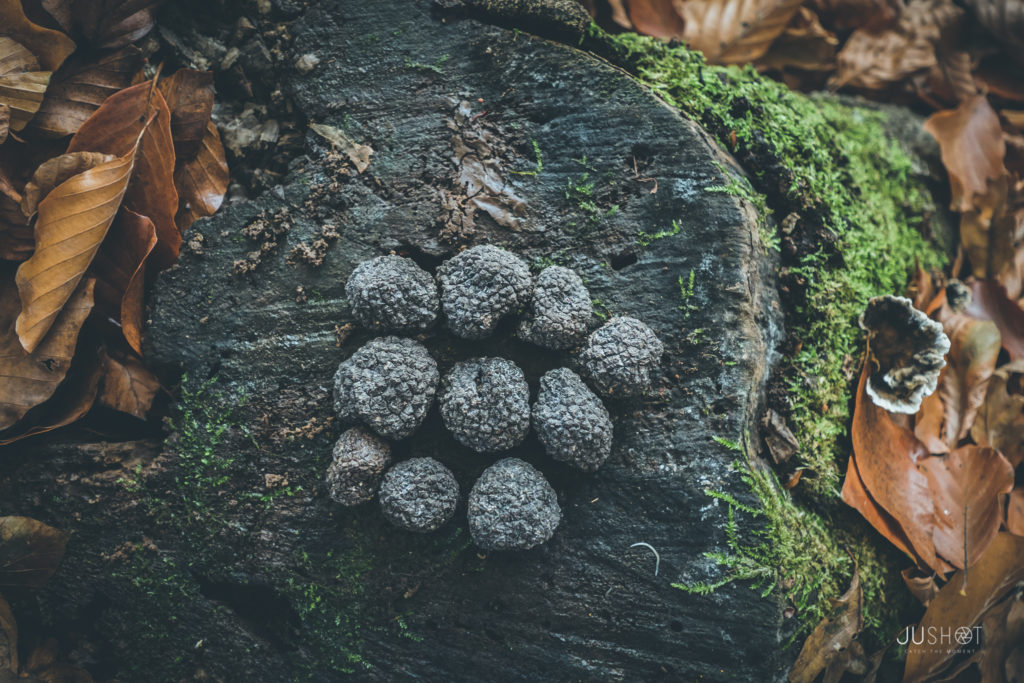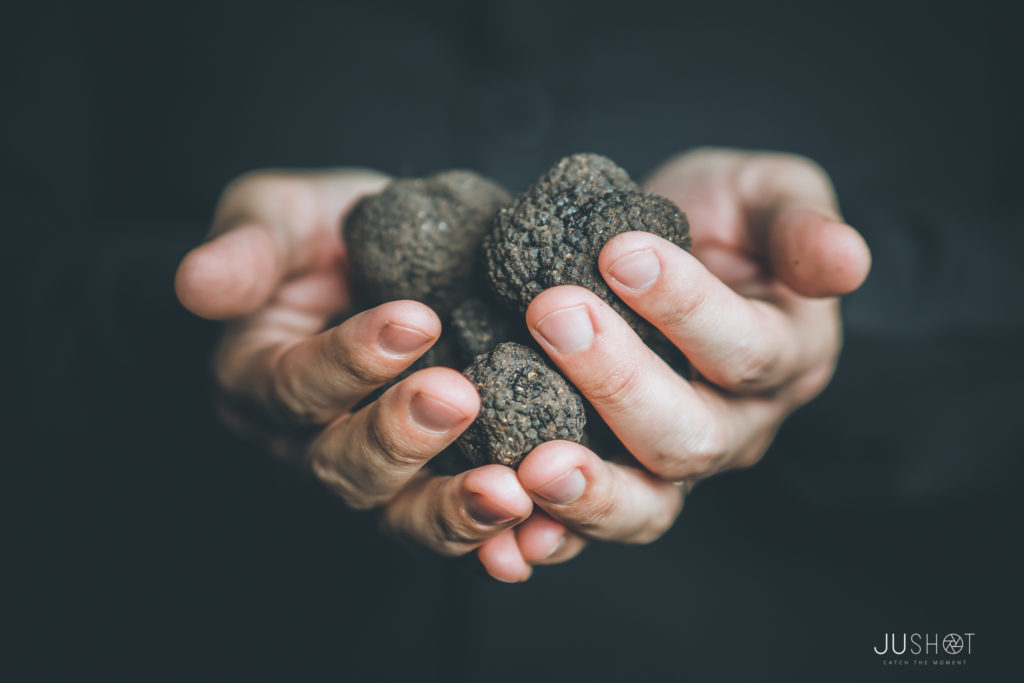

Truffles Plantations.
A profitable agroforestry investment.
Today, the cultivation of truffles is a concrete agroforestry business which, if carried out using the standard developed by the sector experts, leads to excellent results Beware, though: it’s highly addictive!
The cultivation of truffles needs to follow proven technical and agronomic methods, in particular:
• Planting crops appropriately separated and certified by authorized accredited bodies;
• Carrying out agronomic tests to establish the chemical / physical properties of the soil;
• Choosing the most suitable species of plants and truffles for the microclimate and geographical conditions of the plantation;
• Adopting best cultivation practices, which will yield good crops over many years.
It is important to use seedlings grown from seeds harvested in the same geographic and climatic region where the plantation will be established. The same applies to truffles – local truffles should be privileged over truffles from southern Europe for inoculation purposes (vaccination). These practices will increase the survival rate of seedlings after planting them in a plantation and increase the chance of obtaining a truffle crop.
In addition to the tangible benefit of a yield, truffle plantations also contribute to the regeneration and development of mountainous, abandoned and undeveloped areas, guaranteeing the protection of native species and generally improving environmental biodiversity. When planted in optimal conditions inoculated seedlings with summer truffle (T. aestivum), may bring truffle fruiting bodies as early as after four years. Truffles in hazel crops, tend to appear earlier than in oak crops- however, oak crops have a longer lifespan. Therefore, hazel and oak are the most popular crops overall (Hilszczańska, 2016). Assuming a less optimistic approach, we can assume that a summer truffle yield takes place 6 -7 years after the start of the plantation.

The black spore truffle (T. melanosporum), takes longer to reach proper production capacity (8-9 years). It is assumed that these truffles are generally harvested for about 30 years. For plants with a lengthy lifespansuch as oak, beech, etc., the truffle yield can well exceed 50 years.
As for the when it comes to potential yield from a single plantation over 100kg/ha of black spore truffles (T. melanosporum) were harvested in some locations in Italy. In one instance, 4 kilos of black spore truffle were obtained from a single seedling in plantation in France. These are exceptions, of course, but they show the productive potential of truffle plantations.
Based on the experiments carried out in plantation started by professor Hilszczańska, as well as on statistical data from specialistic literature, it is possible to conservatively estimate an annual target production of approximately 55-60 kg of summer truffle (T. aestivum) per hectare. The estimate for black spore truffles (T. melanosporum), is about 40-45 kg per hectare (Marone 2010; Maistrelli, Mosso 2006).
It should be noted that the demand for truffles is gradually increasing, but their yielding in natural conditions (forests) in southern Europe is rapidly decreasing. This happens for a variety of reasons, including climate change, lower rainfall and increasing wasteland in mountainous areas, as well as changes in forest management, caused by the disappearance of animal farming and excessive human exploitation of natural truffle sites.
When all these factors are considered, it is correct to say that the future of truffles depends mainly on the cultivation (dedicated plantations) of these valuable mushrooms The Central European region is and will be more and more often an ideal location for truffle harvesting, both in terms of cultivation and natural sites.
Truffle prices vary greatly according to the size of the individual truffle specimens and their quality. In 2020, for final customers, fresh summer truffle sells for EUR 200 / kg on average, and black spore truffle EUR 400 / kg. It should be noted, however, that when the price of truffles, such as black spore truffles (T Melanosporum), may hit 1000 Euro / kg.
The following websites track truffle prices:
www.acqualagna.com
www.tartufo.com
www.trufflefarming.wordpress.com
Please note that our estimates are based on literature and our experience in aspects such as the time between plantation and yield; we also aim to estimate the yield potential. We would like to emphasize that each project should be assessed individually, as the characteristics of the soil, the geographic location and microclimate may affect the above-mentioned parameters.
Truffles and local development.
As in France, Spain and Italy, the cultivation of truffles in a given area enhancesculinary and wine tourism, both domestic and foreign. It attracts sophisticated, wealthy tourists, interested in local natural, historical and artistic specialties, open to investments, to enjoyan interesting and unique tourist experience. Truffles are the perfect foil to local produce such as: wine, cold cuts, cheese, traditional agricultural products, honey, etc.Moreover,the practice of trufflingincreases the value of anestate, oflocal accommodation and ofcatering facilities, leading to furtherhigh-class tourism and enhanced popularity of the region on anational and international scale.




